Starting a woodworking shop can be both thrilling and challenging.
As a beginner, understanding which tools are essential can make a significant difference in your workflow and the quality of your projects.
With years of experience in woodworking, I’ve learned which tools are indispensable and how they can be used effectively.
This guide will help you set up a beginner’s woodworking shop, ensuring you have the right tools to get started on your projects with confidence.
MyToolTech is reader-supported. When you buy through links on my site, I may earn an affiliate commission at no extra cost to you.
Table of Contents
Essential Tools for a Beginner’s Woodworking Shop
1. Workbench
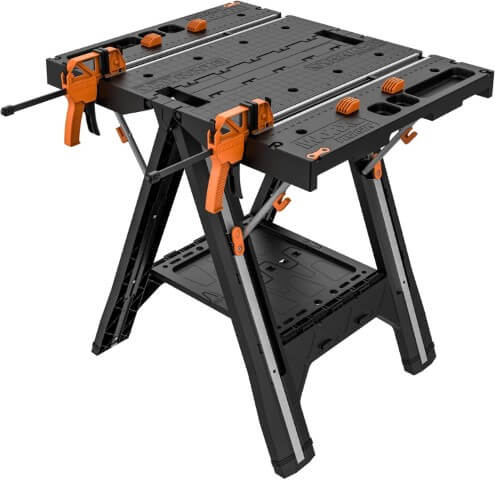
A workbench is the heart of any woodworking shop.
It provides a stable and sturdy surface for cutting, assembling, and finishing your projects.
Without a reliable workbench, precision and safety can be compromised.
A workbench is used for almost every woodworking task, including sawing, sanding, and joining.
It often comes with a vise to hold workpieces securely, allowing you to work on them with both hands-free.
What to Look For
When choosing a workbench, consider the following:
- Stability: The bench should be heavy and stable to withstand vigorous tasks.
- Size: Ensure it’s large enough for your projects but fits comfortably in your workspace.
- Material: Hardwood tops are durable and long-lasting.
Suggested Options
2. Measuring Tape and Marking Tools
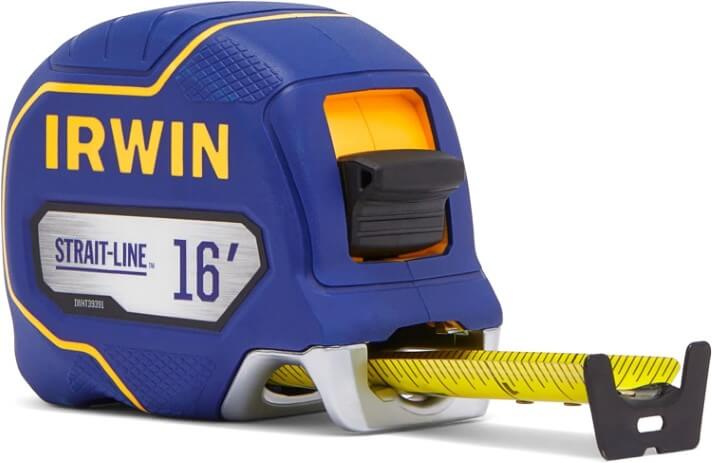
Accurate measurements and markings are crucial for precision in woodworking.
These tools ensure that your cuts and assemblies are exact, preventing costly mistakes.
Measuring tools like tape measures are used to measure lengths, while marking tools like pencils and gauges are used to mark cut lines and dimensions on your workpieces.
What to Look For
- Accuracy: Ensure the tools provide precise measurements.
- Durability: Look for tools made of sturdy materials like steel or hardened plastic.
- Ease of Use: Tools should be easy to read and handle.
Suggested Options
- IRWIN Strait-LINE Tape Measure
- FastCap ProCarpenter Tape Measure
- General Tools Mortise and Marking Gauge
3. Squares
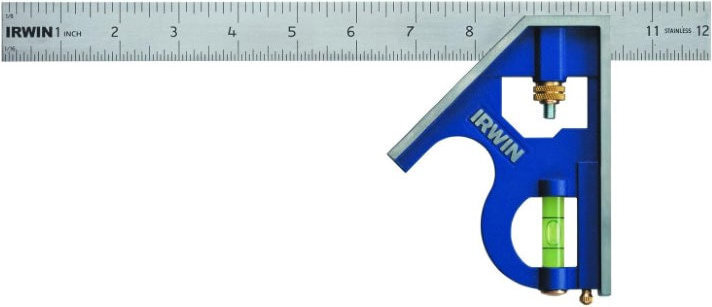
Squares are indispensable for ensuring your cuts and assemblies are perfectly aligned.
They help in setting up accurate 90-degree angles, crucial for joinery and overall project integrity.
Apart from checking the squareness of corners and edges, squares are also used to mark out lines, and set up cuts.
They are essential for ensuring that your projects are built with precision and accuracy.
What to Look For
- Accuracy: Ensure the square is precisely 90 degrees.
- Durability: Look for squares made from high-quality materials like steel or aluminum.
- Type: Combination squares offer versatility, while speed squares are great for quick measurements.
Suggested Options
4. Hand Files
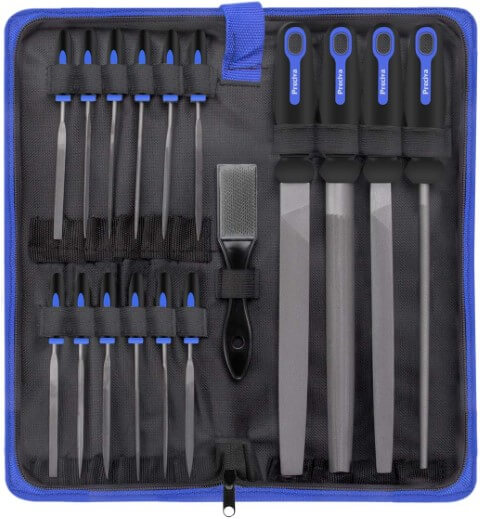
Hand files are essential for fine-tuning and finishing your woodworking projects.
They help in smoothing edges, shaping wood, and refining details that sanders or power tools might miss.
Hand files are used by running the file along the wood grain to smooth out rough spots, shape curves, and refine edges.
Different files are suited for different tasks, such as flat files for general smoothing and round files for enlarging holes or shaping concave surfaces.
What to Look For
- Type: Choose files based on the shapes you need (flat, round, half-round).
- Quality: High-quality steel files retain their sharpness longer.
- Comfort: A comfortable handle reduces hand fatigue during extended use.
Suggested Options
5. Hammer and Mallet
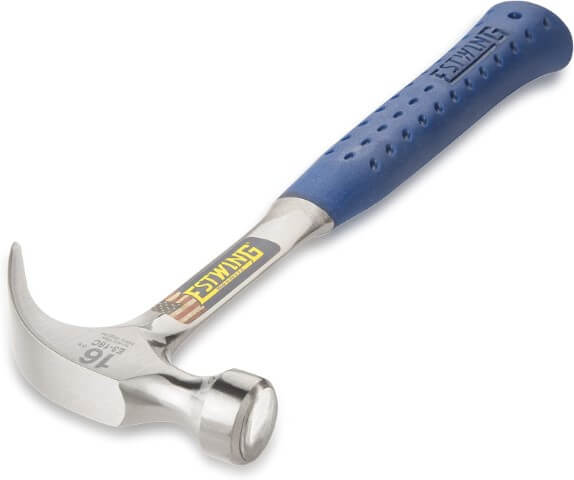
Hammers and mallets are crucial for driving nails, assembling joints, and adjusting parts without damaging the wood.
They provide the force needed for many tasks while allowing for control and precision.
The primary difference between a mallet and a hammer is their material. Mallets are similar to hammers but are made of rubber or wood instead of metal.
While hammers are used for driving nails, Mallets are preferable to apply force to chisels, adjust joints, and tap pieces together without marring the wood.
What to Look For
- Weight: Choose a weight that balances power and control.
- Handle: Look for a comfortable grip that reduces vibration and fatigue.
- Material: Steel heads for hammers and wooden or rubber heads for mallets.
Suggested Options
- Estwing E16C Claw Hammer
- Stanley 51-624 FatMax Anti-Vibe Rip Claw Hammer
- TEKTON Double Faced Soft Mallet
6. Hand Saws

Hand saws are one of the most essential beginner woodworking tools, and are used for making cuts in wood.
They are indispensable for tasks where precision and control are paramount, especially when power tools are too cumbersome.
Different types of hand saws are used for different cuts, such as crosscuts, rip cuts, and fine detail work.
What to Look For
- Type: Choose saws that match your specific needs (crosscut, rip, dovetail).
- Sharpness: Ensure the teeth are sharp for clean cuts.
- Comfort: Look for a saw with a comfortable grip to reduce fatigue.
Suggested Options
7. Chisels
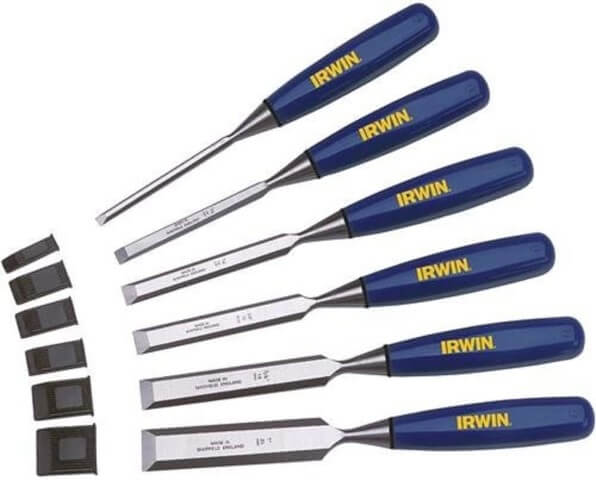
Chisels are essential for detail work, such as carving joints and shaping wood.
They are used by hand, and often in conjunction with a mallet, to carve and shape wood.
Hand chisels allow for precision and fine control that power tools can’t always provide, making them ideal for creating mortises, tenons, and other joinery.
What to Look For
- Steel Quality: High-carbon steel blades hold an edge longer.
- Handle Comfort: Handles should be comfortable and durable.
- Variety: A set with different sizes covers more applications.
Suggested Options
8. Clamps
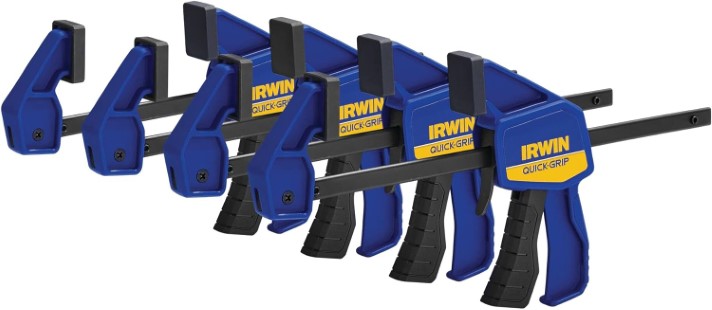
Clamps hold your workpieces together while the glue dries or during assembly. They ensure precision and stability, which are critical for high-quality work.
Apart from holding the pieces during gluing, clamps can also be useful during assembly and even some cutting tasks.
What to Look For
- Strength: Clamps should be strong enough to hold pieces securely.
- Size: Different sizes for different applications.
- Ease of Use: Quick-release mechanisms can save time and effort.
Suggested Options
- Bessey GSCC2.524 Clutch Style Bar Clamp
- IRWIN QUICK-GRIP Clamps
- Jorgensen Cabinet Master 90° Parallel Jaw Bar Clamp
9. Power Drill
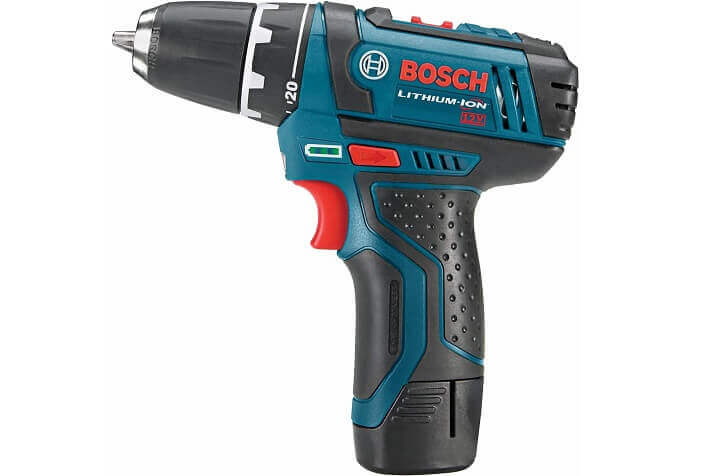
A power drill is vital for drilling holes and driving screws.
It’s one of the most frequently used power tools in any workshop.
Power drills are used to create holes in wood, metal, and other materials. They can also drive screws, making assembly tasks quicker and easier.
They are generally available in corded and cordless variants. If your project demands high power output and reliability, then a corded drill is preferable.
However, if portability and flexibility are of utmost importance, then a cordless drill should be your go-to choice.
For professional applications, consider cordless drills from power tool brands like Dewalt, Milwaukee, Makita, etc., whereas, for DIY projects, Black and Decker and Avid offer economical options.
What to Look For
- Power: Ensure it has enough torque for your projects.
- Battery Life: For cordless models, long battery life is essential.
- Versatility: A drill with variable speeds and settings is more useful.
Suggested Options
10. Sanders
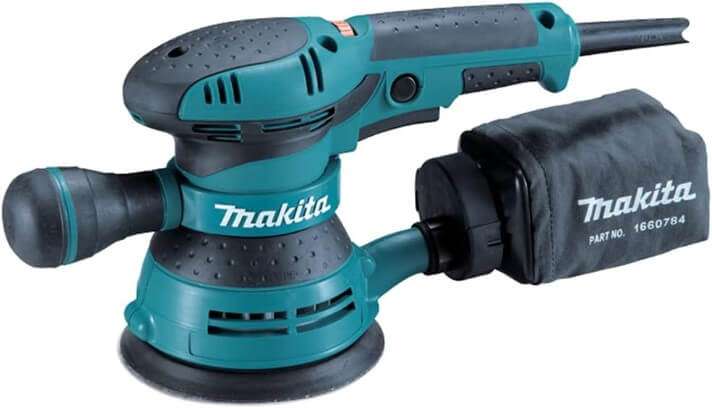
Sanders smooth surfaces and prepare wood for finishing.
They save time and effort compared to sanding by hand.
If you want your projects to stand out, invest in a quality sander to give your final project that outstanding finish.
They come in various types, including orbital, belt, and detail sanders, each suited for different tasks.
Generally, orbital and belt sanders are suitable for the majority of woodworking projects.
What to Look For
- Type: Choose the right type for your needs (orbital, belt, detail).
- Power: Ensure it has enough power for your projects.
- Dust Collection: A good dust collection system keeps your workspace clean.
Suggested Options
11. Table Saw
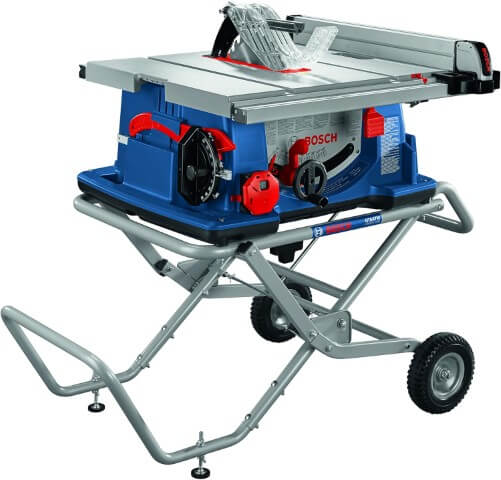
A table saw is essential for making straight, accurate cuts in large pieces of wood.
It’s a staple in any woodworking shop for ripping, crosscutting, and bevel cuts.
Table saws are used to make precise cuts in wood. They are particularly useful for cutting large panels and making repetitive cuts.
What to Look For
- Blade Quality: A high-quality blade ensures clean cuts.
- Fence System: A good fence system ensures accurate cuts.
- Safety Features: Look for features like riving knives and blade guards.
Suggested Options
12. Circular Saw
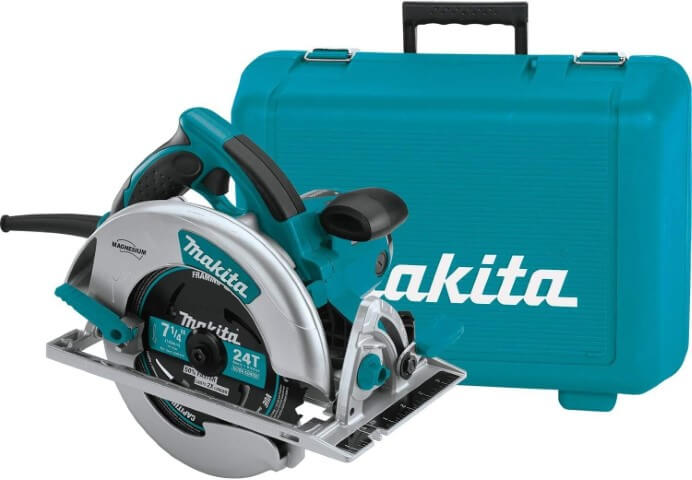
A circular saw is like a portable version of a table saw that can make straight cuts in various materials.
It’s essential for breaking down large panels and making quick, accurate cuts on-site.
These saws are primarily used for ripping and crosscutting wood, such as cutting down sheets and making precise cuts quickly.
Their adjustable blade depth and angle make them versatile for different tasks.
What to Look For
- Power: Ensure it has enough power to cut through dense materials.
- Blade Quality: A high-quality blade provides cleaner cuts.
- Safety Features: Look for features like blade guards and electric brakes.
Suggested Options
- DeWalt DWE575SB 7-1/4-Inch Circular Saw
- Makita 5007MGA Magnesium Circular Saw
- Bosch CS10 7-1/4-Inch Circular Saw
13. Jigsaw
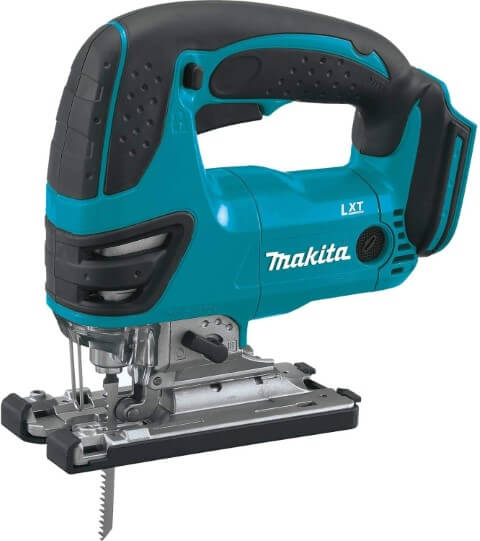
A jigsaw is a versatile tool that can cut through wood, metal, and plastic.
Unlike a circular saw, a jigsaw is perfect for making curved and intricate cuts.
As a result, these are preferable for cutting unconventional shapes and curves in wood and other materials.
They are ideal for detailed work that requires precision.
What to Look For
- Variable Speed: Allows for more control over cuts.
- Power: Ensure it has enough power for thicker materials.
- Blade Quality: High-quality blades make cleaner cuts.
Suggested Options
14. Router
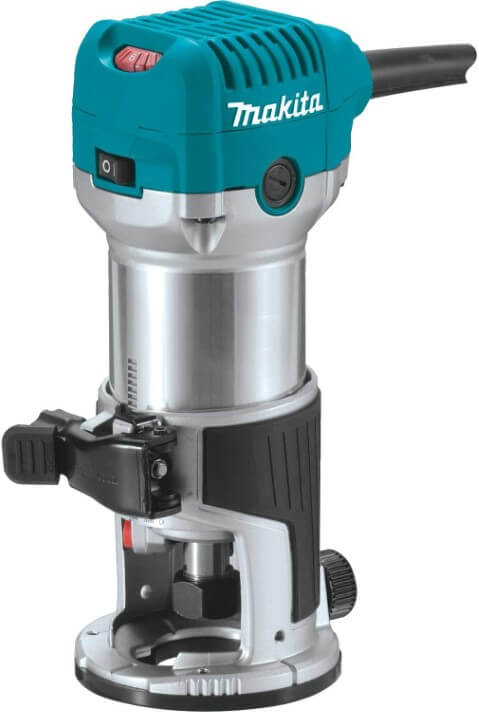
A router is used for hollowing out areas in wood, such as creating edges, joints, and intricate designs.
It’s a versatile tool for decorative and functional woodworking.
Routers are used for shaping edges, cutting grooves, and making joints.
One of the most common use of a router is cutting the groves along edges of overlapping elements, such as wooden window panels or double doors.
What to Look For
- Power: Higher power allows for deeper cuts and tougher materials.
- Variable Speed: Offers better control over different tasks.
- Ease of Use: Look for a router with comfortable grips and easy adjustments.
Suggested Options
15. Bandsaw
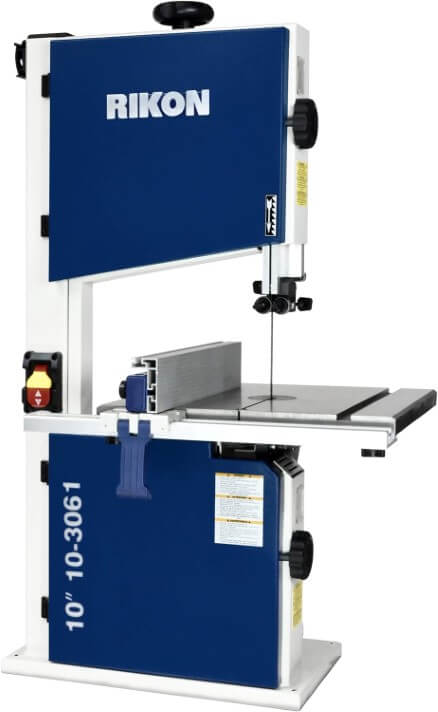
A bandsaw is essential for making curved cuts and resawing lumber.
It’s versatile and can handle a variety of tasks that other saws cannot.
Typically, a bandsaw is used for cutting curves, resawing thick lumber, and making intricate cuts that would be difficult with other saws.
However, you can also use it for ripping and crosscutting, making them highly versatile.
What to Look For
- Blade Size: Choose a blade that suits your typical cutting tasks.
- Power: Ensure it has enough power for the types of wood you plan to cut.
- Table Size: A larger table provides better support for larger workpieces.
Suggested Options
- JET JWBS-14CS 14-Inch Deluxe Pro Bandsaw
- Rikon 10-3061 Bandsaw with Fence
- Grizzly G0555LX Deluxe Bandsaw
Final Thoughts
Setting up a woodworking shop requires a careful selection of tools to ensure efficiency and precision in your projects.
The tools listed in this article are essential for beginners, providing a solid foundation for any woodworking endeavor.
Investing in quality tools will save you time and money in the long run, allowing you to focus on honing your skills and enjoying the craft.
Frequently Asked Questions (FAQ)
1. What are the most essential tools for a beginner’s woodworking shop?
A workbench, measuring and marking tools, hand saws, chisels, clamps, power drill, sanders, table saw, jigsaw, and router are essential for any beginner’s woodworking shop.
2. How do I choose the right tools for my woodworking projects?
Consider the type of projects you plan to undertake, your budget, and the space available in your shop. Investing in high-quality, versatile tools is always a good idea.
3. Can I start woodworking with a limited budget?
Yes, you can start woodworking with a limited budget. Many beginners start with a few essential tools and gradually build their collection. Focus on acquiring high-quality basic tools that you will use frequently, such as a circular saw, drill, and basic hand tools. Over time, you can invest in more specialized tools as needed. Look for deals and second-hand tools to save money while still getting quality equipment.
